Do you remember the first time a painting concept clicked for you? For these Dreamliners (a grassroots group inspired by the live daily airing of Streamline Art Videos by Eric Rhoads, publisher, during the days of COVID19 stay-at-home orders), the big “aha” moment came during plein air workshops, painting travels, and even at Streamline events such as Plein Air Live, the world’s first online art conference. Keep reading to see if you’ve shared some of these special moments!
1. “When I said to an instructor, ‘I can paint horses but not trees,’ and she said, ‘Either you can paint or you can’t.’ This felt like a gut punch but it was the most enlightening moment for me: no silly excuses. Now I know it’s just Value, Shapes, Edges, and Color.” ~ Stella Purdy
2. “Painting is an artifact – you experience the beauty with all your senses. We’re using the sense of sight at an elevated level and the residual effect is that all our senses get better so we have a doorway to being more present! (from Rose Frantzen)” ~ Ginny Good
3. “I had just started painting again after a 20+ year hiatus, and took a workshop from Greg LaRock. The topic of visual atmosphere came up, and he talked about colors lightening up and graying out with distance. During a demonstration he pointed to some rocks that would become part of the background and said, ‘I know those rocks look dark to everyone. But to create distance, you have to exaggerate and make it up.’ He proceeded to paint a beautiful seascape, complete with atmosphere and rocks that were painted with a grayed hue and value much lighter than they actually appeared in person. They were completely believable and poetic. Lesson learned.” ~ Karen Wadsworth
4. “I was traveling home to Louisiana from a Sherrie McGraw workshop in Fredericksburg, Texas with a couple of artist friends and we stopped to spend the night at some quaint vacation cottages. It was a lovely afternoon and the Lantana bushes were 5 feet high, covered with blossoms that attracted a multitude of butterflies and bees. As usual the ‘good’ camera was inaccessible so I quickly grabbed my phone/camera, and began running around, trying to capture the rapidly moving insects as they fluttered about dancing through the air.
“Eventually, realizing my amateur efforts were futile, I shifted my attention towards the rapidly diminishing sunlight on a young oak tree with branches arching over the lake. As the angle of the light began to drop from the tree top canopy to the trunk, it was as if the tree came alive just for me, transforming from dull dark brown to a vivid reddish brown … I began to yell with excitement and my friends, busy unpacking for the night as proper adults do, ignored my silly cries and fascination at the landscape. I’ve never again seen a transformation quite so vibrant and never forgotten the magical quality of light.
“Definitely an aha moment!” ~ GV-Artist Voorhies
5. “That every color falls into a family of warm, cool, or neutral, depending upon their spectral reflectance curve and not on their relationship to other colors (“This is warmer than that one,” which is what I thought up to that point). It took the guesswork out of which color to use where – warm foregrounds, cool shadows, cool distance.” ~ Elin Thomas (see images below)
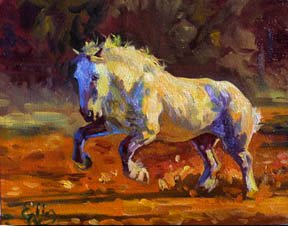
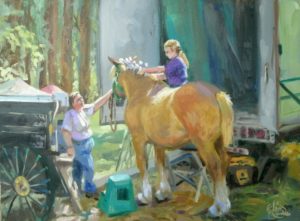
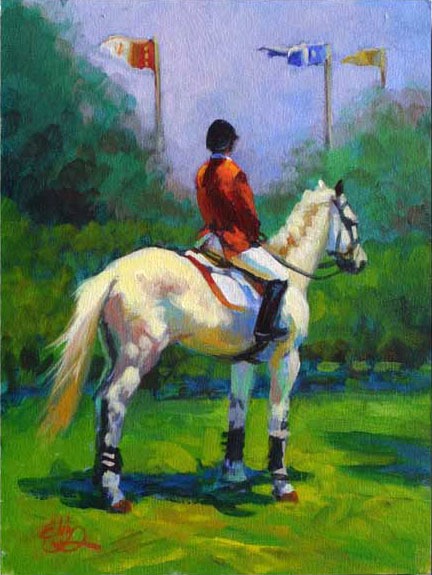
6. “My biggest aha moment was when I heard someone say ‘photos lie.’ (I can’t remember if it was in Plein Air Live or Realism Live or another Streamline Art video). Learning about atmospheric perspective and how it influences the temperature of light we see in person that is not picked up by cameras and incorporating it into an artwork along with our artistic interpretation of all of our sensory perceptions is what creates the magic in our art to capture the experience.” ~ Eugenia Algaze Garcia
7. “It was 1979. I was in art class. We were drawing daisies and a friend said ‘draw what you see.’ I’ve applied that to everything I paint or draw.” ~ James Vissari
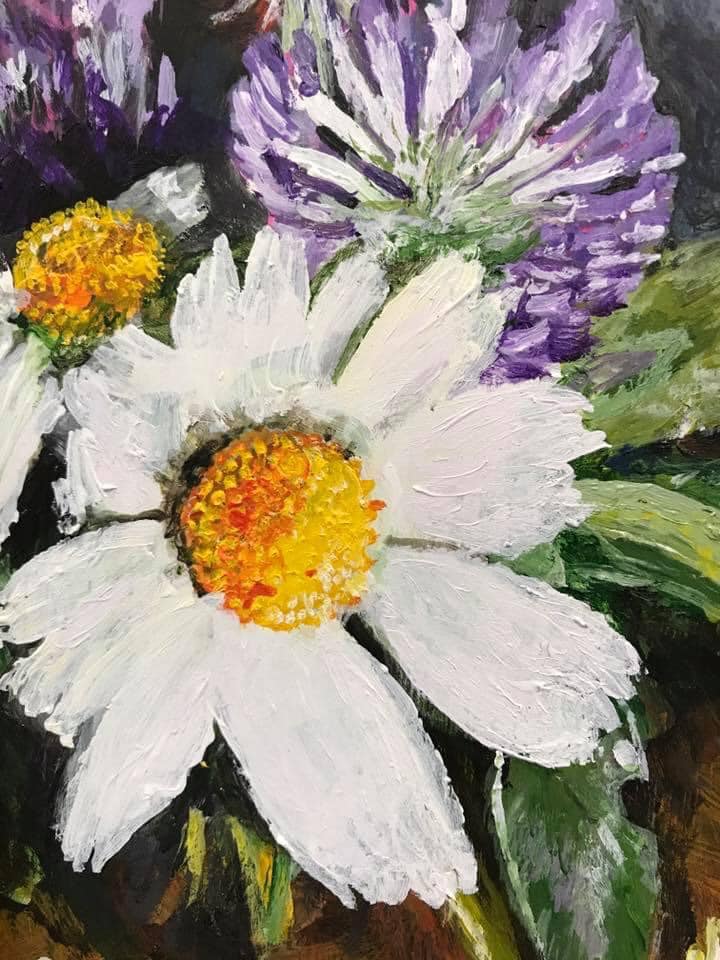
8. “We learn from our mistakes, so I like when a teacher reviews mine or other people’s paintings. We grow with positive critics.” ~ Danielle Tremblay
9. “I’ve been an artist for many years and never really gave hard thought to a picture that just didn’t look right. I would just give up and move on to the next. Recently one that I felt I had really worked hard on just didn’t seem to come together. No matter how, where, or when I looked at it, it never seemed to look right to me. I finally gave up and figured I’d frame it and set it aside. After going through a collection of frames I found one that would fit without altering. So putting it together wouldn’t you know … it was the answer to the look! Everything clicked. The picture and frame worked out awesome. So my aha moment from now on is to pair the picture and frame together before I lose any more hair trying to figure out why the picture doesn’t look right.” ~ Doug Kastella
10. “My aha moment came in July 2019 during a live drawing workshop in Scotland with Juliette Aristides. I had never drawn while standing at an easel, with a live model and a timer ticking. Juliette showed me why everyone was holding their pencil or brush with arms straight out to measure proportions, I had had no clue.” ~ Linda Marie Crabb
11. “I was taking a one-day workshop from Dawn Whitelaw. It was on designing and doing small preliminary sketches. ‘Instead of rules, let design lead you. We are all good designers. Let your inner chooser lead you. Your style is rooted in what you pick to paint.’ First of all I really felt free to follow my instincts. Then I became very convinced for the first time – although I have heard it a million times before – to do those preliminary sketches when you are on site for a plein air painting. Such a valuable lesson even though we didn’t touch our paints.” ~ Cindy Rutherford
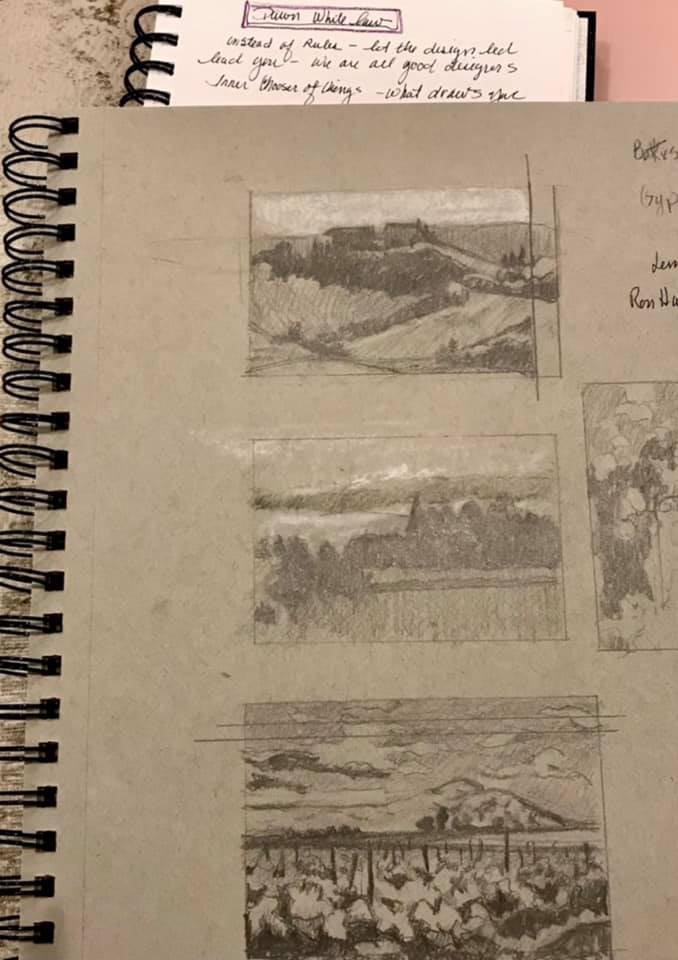
12. “When Ray Roberts demonstrated and said, ‘your lightest dark must be darker than your darkest light.’ because otherwise, the values fall apart.” ~ Jeanette M. Herron
13. “A painting workshop with Guido Frick. He made us paint a new 24”x30” canvas en plein air every day for five days. I attacked each canvas like my brush was a sword, like he did. On the fifth day he said, ‘You know what I like about you, Marla? You’re fearless!’ I replied, ‘You’ve taught me it’s only paint!'” ~ Marla Ripperda
14. “I was at a plein air competition Coupeville Washington on Whidbey island watching a demonstration by Barbara Noonan in pastel. She was painting Ebey’s Prairie. She had painted most of the scene, reserving the sky for the end. At that point, she dropped her painting to the ground and laid various colored pastels across the top to decide what color would be best for the sky. She chose a pale yellow despite the fact that in reality the sky was blue. I’d never seen someone do that before.” ~ Ivy Breen (images below)
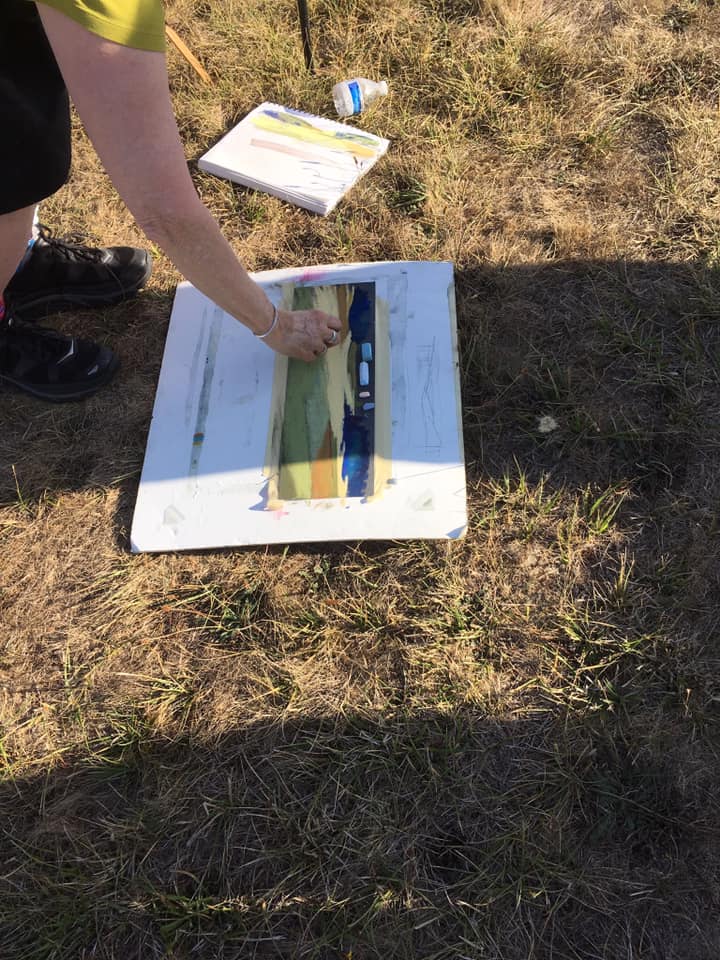
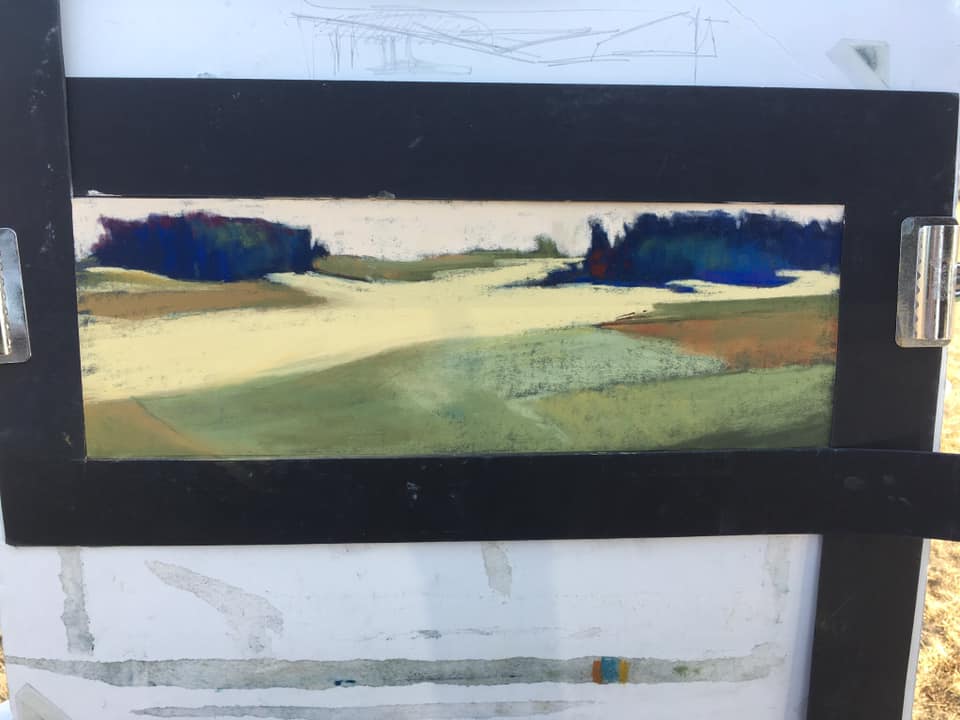
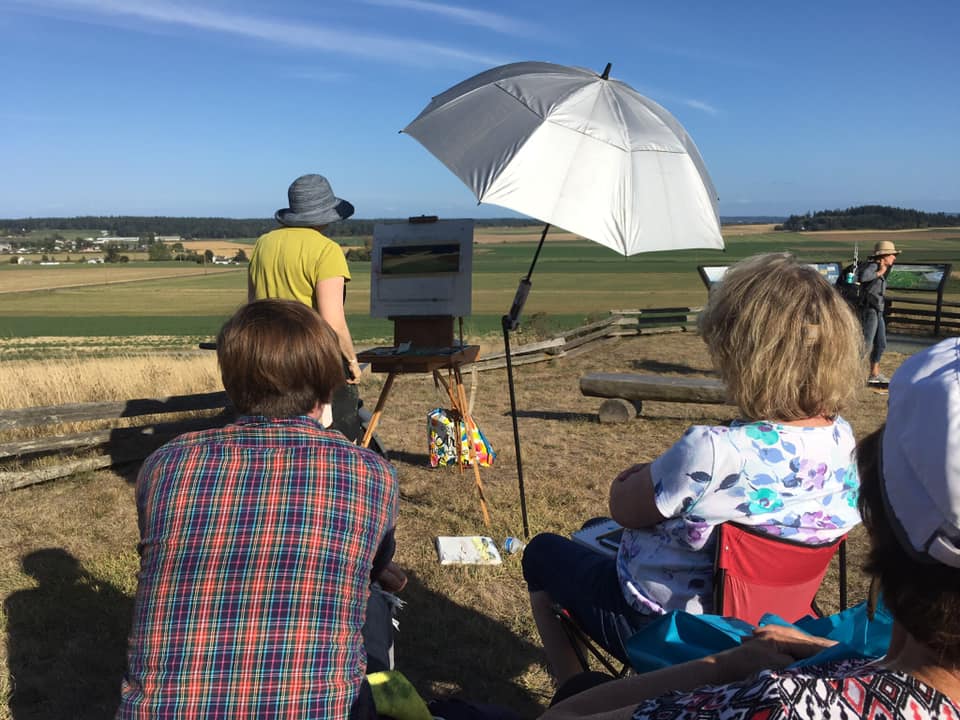
15. “Aha moment? When I grasped that it is shape and a shape’s position that matters most. I was in Laguna Beach painting at Heisler Park in a plein air workshop with John Cosby.” ~ Sherry Pound West
16. “From Plein Air Live, two aha moments: John MacDonald’s talk about values, on selecting three in a painting and having a range of tones within them that must not overlap. And then John Macpherson – when he said that the use of opposites on the color wheel next to each other made the colors much more intense and increased the chroma! Fabulous.” ~ Peter McLeod
17. “Kevin Macpherson made good use of concrete teaching tools to explain reflected light in his Plein Air Live presentation. Once you see it, it becomes easy to understand. An aha moment for me.” ~ Donna Carrick
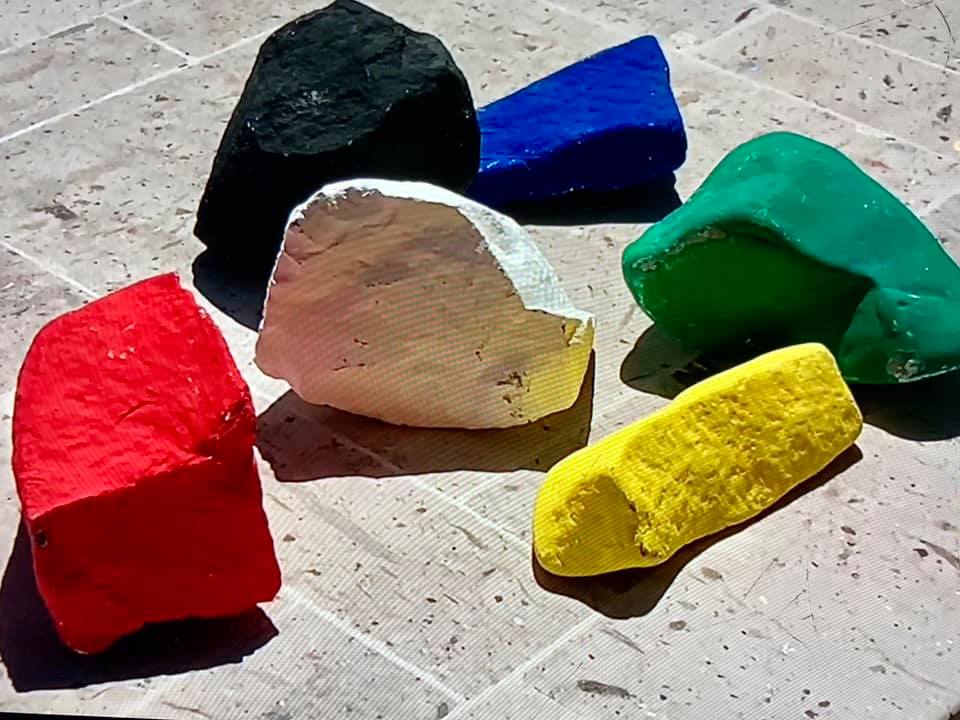
18. “In regards to plein air painting … learning that you’re out painting to make observations and studies. If a nice looking painting comes out of your efforts that’s a bonus.” ~ Melissa Umbach
19. “I liked it when Kathie Odom said if it gets the message across it’s good enough. This struck a comforting chord in me as when striving for perfection, the message is often lost. Go for the message. Any formal schooling I might have missed and regretted became okay.” ~ Tamara Keiper
20. “One of mine came when I was able to take a workshop with Charlie Hunter, at Plein Air at Forgotten Coast in Florida, 2019. I’m a fairly new painter. Loved his workshop – he did a demo in the morning, showing us various tools and techniques he uses, then set us students free to see what we came up with on our own. I really enjoyed the near-monochrome rendition of the scene I chose, and especially the shaggy 1-inch chip brush I used. I also bought his video. The following day, I used some of those same methods when entering the Quick Draw, and to my great surprise, I won first place in the open (non-pro) division! I was in tears, I was so stunned.” ~ Susan E. Hoffman
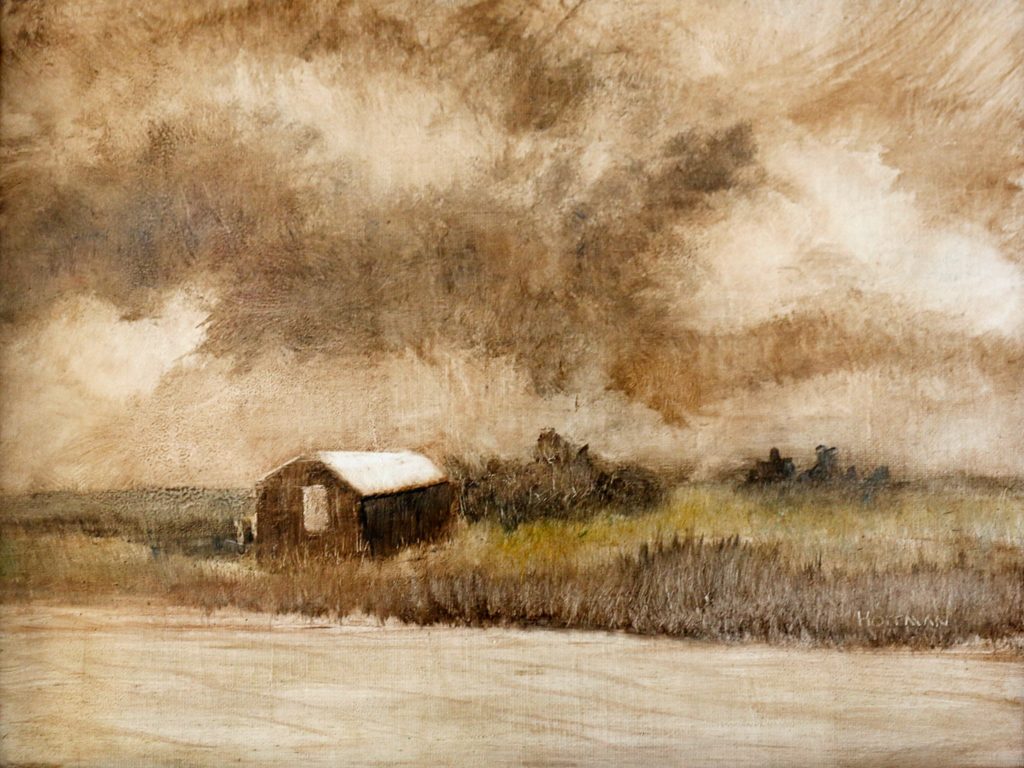
21. “A workshop with Joyce Ahrens. Her tagline is, ‘It’s just paint. Nobody dies.’ It was perfect for me as I approached each blank canvas with angst. I have remembered it every time I begin a challenging piece. ‘It’s just paint…’” ~ Linda Powell
22. “In 2002 I had a stroke. While lying in my bed at the rehab place a voice said, ‘So about this art thing. Are you going to school or what?” On my way home from rehab we stopped at the community college. I signed up for a number of classes. Because I couldn’t drive, my daughter would drive me to school and my husband picked me up. It was that voice that brought me back to my original desire.” ~Alicia Pulcher
23. “My aha moment was during Paul Kratter’s demo on Plein Air Live when I could have been disappointed that it is impossible to follow an oil painting tutorial in transparent watercolors without making mud, but discovered that I could use gouache and my usual watercolor supplies to successfully follow an oil painting tutorial. That broke down all the barriers between the mediums to allow me to appreciate their unique qualities.
“That painting is now framed and hangs on my studio wall to remind me to try new things and not let perceived barriers keep me from stretching myself as an artist. I have since also purchased Cobra Water Mixable Oils and am enjoying learning oil painting now too. Watercolors will always be my first love. I have found that painting mediums are like my children, though: my love isn’t a set amount divided between them. Adding another doesn’t diminish how I feel for the first. I added a couple gouache paintings in with my watercolors at the Costa Gallery the last time I dropped new paintings off. It felt right.” ~ Katy Smith
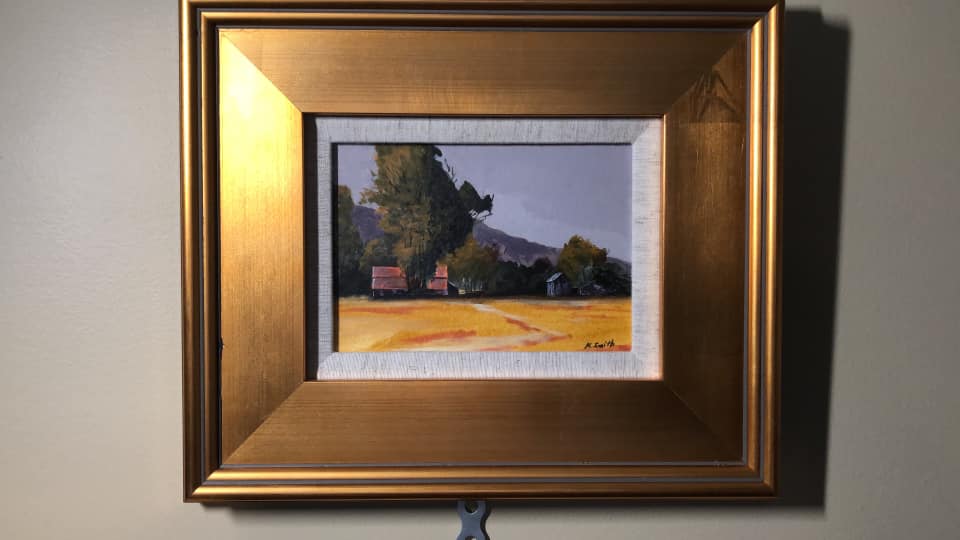
24. “Plein Air watercolor workshop in 1998: Keep it simple. You don’t have to paint everything in front of you. You are the artist and you can edit. In the same workshop, I learned how there are colors in the shadows!” ~ Kimberly Ann Halvorson Caldwell
25. “I took a ‘Plein Air to Studio’ workshop by Keith Bond in 2012 in Steamboat Springs, Colorado. He said he doesn’t copy a scene, but rather he tries to capture the essence of the place. He said that sometimes you need to move the tree, divert the river, or move that mountain! (Aha!) He also talked about the importance of light and how different it was during the midday hours versus the late afternoon or early morning.” ~ Meg Ann (photos below)
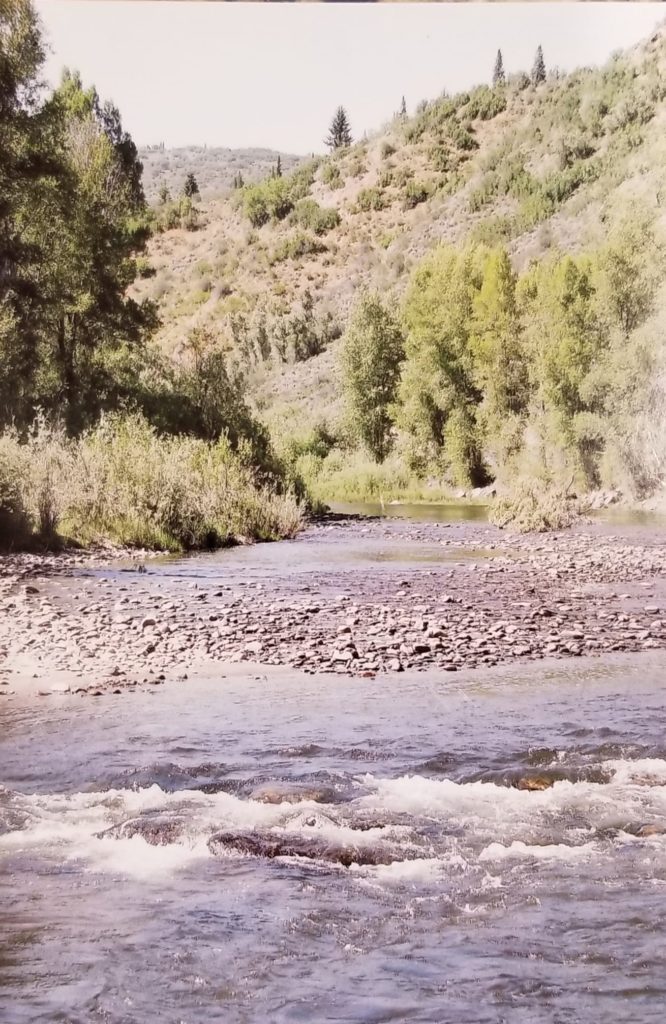
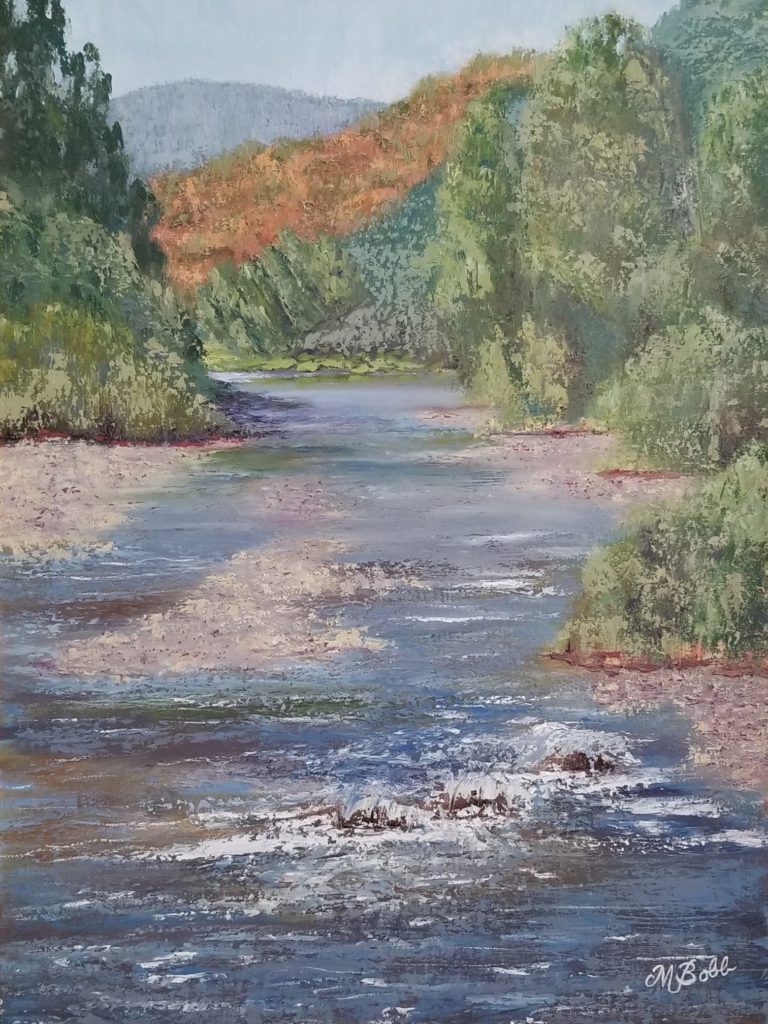
26. “Oh, where to begin? During the first Plein Air Podcast I listened to, Stephanie Birdsall suggested painting the light and shadow side of an object from different piles of paint. This helped me understand warm versus cool in light and shadow. Then West Fraser talked about the importance of drawing a hundred heads … I had drawn nothing but heads as a young girl, so his remarks gave me a much needed injection of confidence. While teaching atmospheric perspective, my first teacher, Ted Matz, told me to ‘take your viewer on a journey.”’ At Plein Air Live, Jean Stern talked about painting the colors you feel, not just the colors you see. He gave me permission to express rather than simply copy. And during Realism Live, Marc Dalessio observed that since it is difficult to paint shapes perfectly, why not ‘Err on the side of beauty.’ This particular revelation seems like good advice for life well beyond art.” ~ Sue Ginter
What’s your most memorable aha moment? Share it with us in the comments below!
> Click here to subscribe to the free newsletter, Plein Air Today
> And click here to subscribe to PleinAir Magazine so you never miss an issue!
> Looking ahead, join us in January 2023 for Watercolor Live!

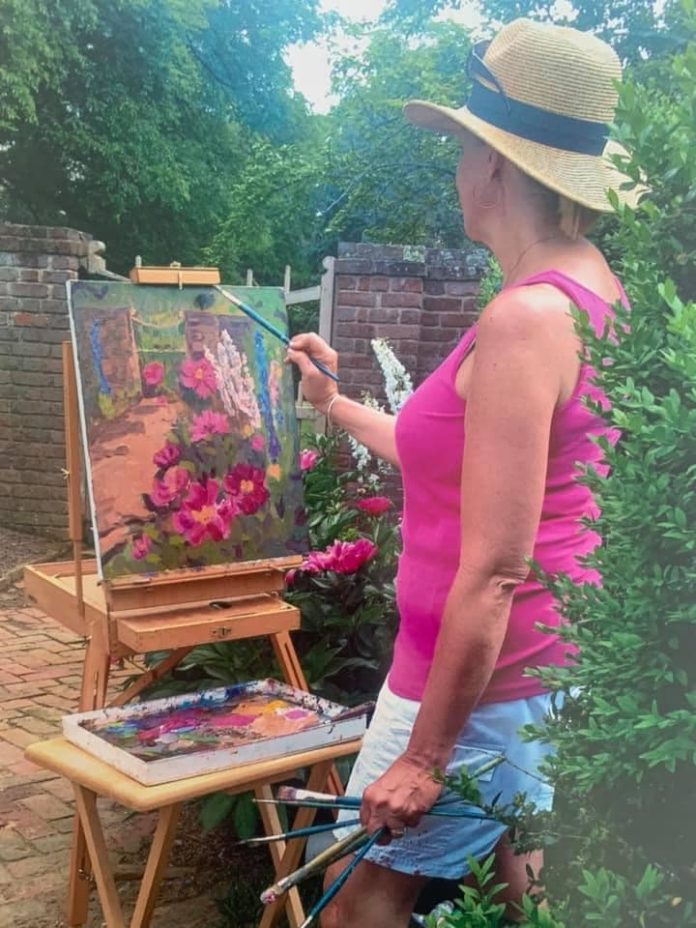
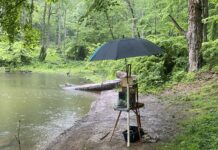


When Phil Starke explained that whether we are painting from a photograph or even directly from real life, our goal is not to try and “match the color” we see. Instead, it is to “interpret” through the use of color, to “explain” to the viewer, so the viewer can understand and feel the scene.
I was taking a workshop by Bill Perry and I took in a painting of a vase of flowers for his critique. He stood back and looked at it and kinda said to himself, though loud enough that I heard ” all hard edges”. At the time I did not understand what he meant but I made it my quest to find out all about hard edges and then soft edges. Truly a Aha moment. What a awaking!
Susan Beatty
Think of the scene as a quilt block.
One day during a Plein Air in the Parks retreat in Yellowstone I was painting next to a gal who was a fiber artist. As we looked down on the complicated scene, we felt overwhelmed. Daniel Hidalgo suggested we interpret the scene as a quilt square. My painting buddy broke it down into about 5 bands of color in a great abstract that instantly coalesced when you knew it was a stream in the Lamar Valley. I broke it up into about 3 values of each color (light green, medium green, dark green). This simplified the scene, allowing me time for details & refined shadows before the bus pulled away. That painting sold yesterday!
Phil Starke demonstrated how using more paint makes a difference in any painting. Many of us non-professionals are too sparing with paint. That was an “aha” for me.
My latest A-HA! moment came while watching Michael Obermeyer paint a studio demo from a field study. He said he paints and makes decisions at the same speed in the studio as he did en plein air to achieve that same freshness. In other words, he completes, or takes the painting as far as he wants to go in about two hours or less, same as in the field. I have tried this and it does keep me from overworking, overthinking, etc., and I finish instead of just starting.
I took a Plein Air workshop with watercolorist David Tripp and it was an Aha moment when I discovered that I needed to paint the clouds’ shadows with water, then add the shadowy colors, leaving the paper white.
Oh so many…one of the best was on a workshop with Haidee-Jo Summers when she was talking about simplifying complex scenes, showing us an amazing painting she did of a bunch of cows around a gate, light flooding through the scene. ‘Nobody counts their legs’. So true.